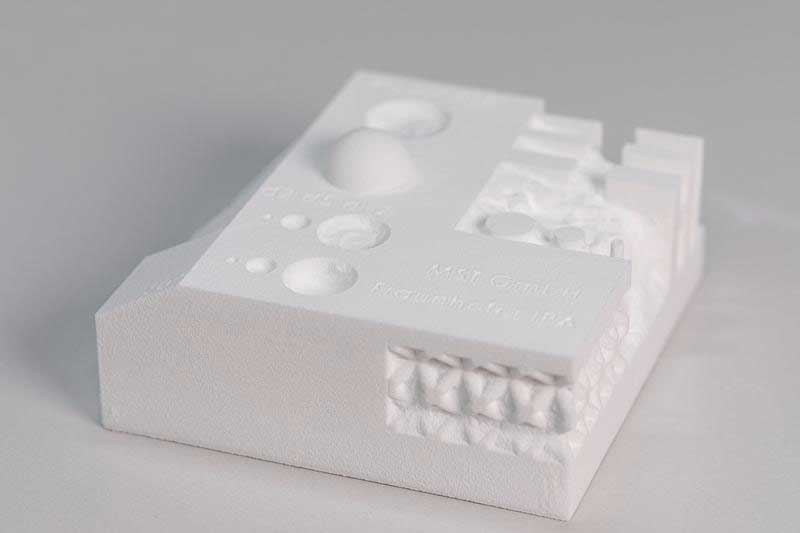3D-printed components usually have to be reworked. Researchers at Fraunhofer IPA and MST Microstrahltechnik Vertrieb GmbH developed a semi-automated test setup in which they investigated the effect of different blasting media on components made of different materials. They will present the system and the results at DeburringEXPO 2023.
Printing out complexly shaped components quickly? 3D printing makes it possible. As far as the visible surfaces are concerned, however, these often have to be reworked or freed from production residues. Because the components grow layer by layer, they are not always as perfectly formed as desired. For post-processing, blasting systems are available in which abrasive media such as nut kernels or glass splinters are accelerated by an air stream and hit the surface, removing material in the process. How much material is removed depends, among other things, on the material of the component and the size and type of abrasive. Know-how and sensitivity are therefore required: on the one hand, the surface roughness of the components must be efficiently minimized, and on the other hand, the components must not melt or burn.
Understanding of processes greatly improved
But which changes can be achieved with which blasting media? Or, to put it another way: Which abrasive has which effect? Researchers at the Fraunhofer Institute for Manufacturing Engineering and Automation IPA have now answered these questions together with the company MST Microstrahltechnik, thus greatly improving our understanding of these processes. “We processed various 3D-printed plastic components with different blasting media and compared the effects,” says Mark Becker, a scientist at Fraunhofer IPA. The components were 3D-printed geometries with corners and edges as well as thin wall and column elements made of three different materials: polyamide, PLA and PEEK. The researchers processed these components with three abrasive materials each, which varied slightly from print material to print material. The company MST Microstrahltechnik primarily contributed its expertise in all aspects of abrasives, while the researchers at Fraunhofer IPA developed a semi-automated test setup to increase reproducibility – and compared the results with those obtained via manual processing with the abrasive. Were there burns in the area of the thin wall and column elements? How well was the surface roughness reduced? “Particularly in series production of 3D-printed components, it is helpful to adapt the abrasive material and the blasting process specifically to the component in order to get the optimum out of it,” says Becker, summarizing the findings. This is exactly what Fraunhofer IPA and MST Microstrahltechnik offer interested companies: They optimize the blasting process on behalf of the customer to the respective components and provide support in the selection of suitable blasting media.
At DeburringEXPO2023, Fraunhofer IPA and MST Microstrahltechnik will present their semi-automated blasting system. Visitors can see on site how various components are optimally reworked.
More on October 10-12, 2023 at DeburringEXPO, Messe Karlsruhe, Hall 1/Stand 612, Leading Trade Fair for Deburring Technologies and Precision Surfaces.
Subscribe to our Newsletter
3DPresso is a weekly newsletter that links to the most exciting global stories from the 3D printing and additive manufacturing industry.






















